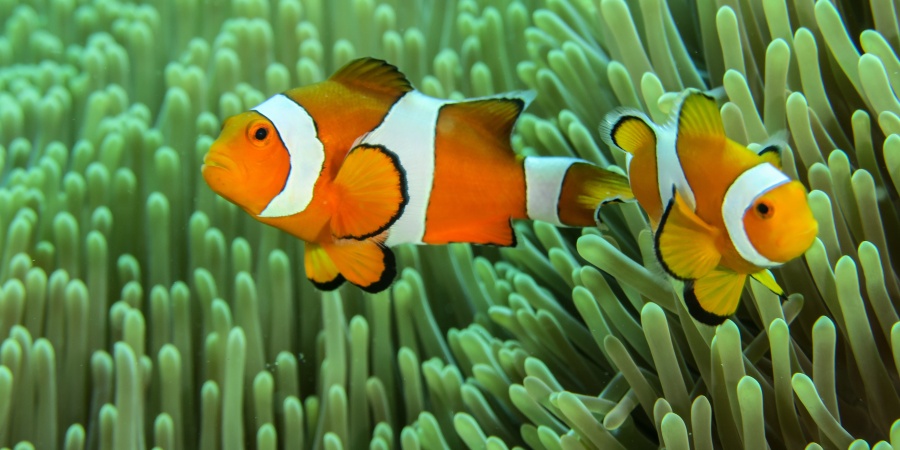
Anemonefish - Photo PlieDo / Adobe
What is an anemonefish? Anemonefish are exquisite little fish in the tropical damselfish family. They are popular pets in aquariums, and were the main characters in the animated Disney film Finding Nemo. They actually 'bathe' in the stinging tentacles of large sea anemones to gain protection from larger predators. Special chemicals in the mucous that coats the skin of anemonefish prevent them from being stung.
What do they look like? There are several different species but almost all of them have bold stripes and all are brightly coloured in various combinations of orange, black and white, and have rounded fins. Some species have a maximum length of only 7.5 centimetres, whereas other may sometimes reach 16 centimetres long.
Where do they live? Anemonefish are found throughout the warmer waters of Western Australia, from the Houtman Abrolhos Islands offshore from Geraldton and to the north. They live in Shark Bay Marine Park, Ningaloo Marine Park (where you can see them when snorkelling close to the shore), Montebello Islands Marine Park and the Rowley Shoals Marine Park.
What they eat and how: They feed on plankton such as copepods and the larval forms of sea squirts (ascidians). Some species also eat seaweeds.
Threats: Anemonefish are frequently collected from the wild for the aquarium trade.
Behaviour: Anemonefish make a rather drastic transformation when a member of their social group dies — one of them actually has a sex change. Anemonefish live in groups of one large dominant female and one or more smaller males. Only the largest male fertilises the female’s eggs, as the others are sterile. Size and the aggressive behaviour of each fish towards those below it (with the female at the top of the pecking order) maintain the hierarchy. However, if the female dies, the largest male begins to act like and female and develops fully functioning ovaries. At the same time, the second-largest male becomes sexually mature and takes over as the dominant male.
Breeding and caring for young: The male selects and prepares a nest site, on which the female lays 100-1000 eggs. The male vigorously defends the nest and eggs. Tiny transparent larvae hatch after six or seven days. If they survive the next 8-12 days, they settle on the sea bottom, assume the juvenile colour pattern and begin to search for a suitable anemone home. If this is already occupied it must take its place at the bottom of the pecking order.
Conservation status: Anemonefish are reasonably common in Western Australia’s marine parks.
How you can protect anemonefish: We can look after anemonefish by protecting their habitat and the water quality in areas where they live. WA's marine parks and reserves protect anemonefish habitat. Reducing greenhouse gas emissions by using less power will help to protect our coral reefs.



























